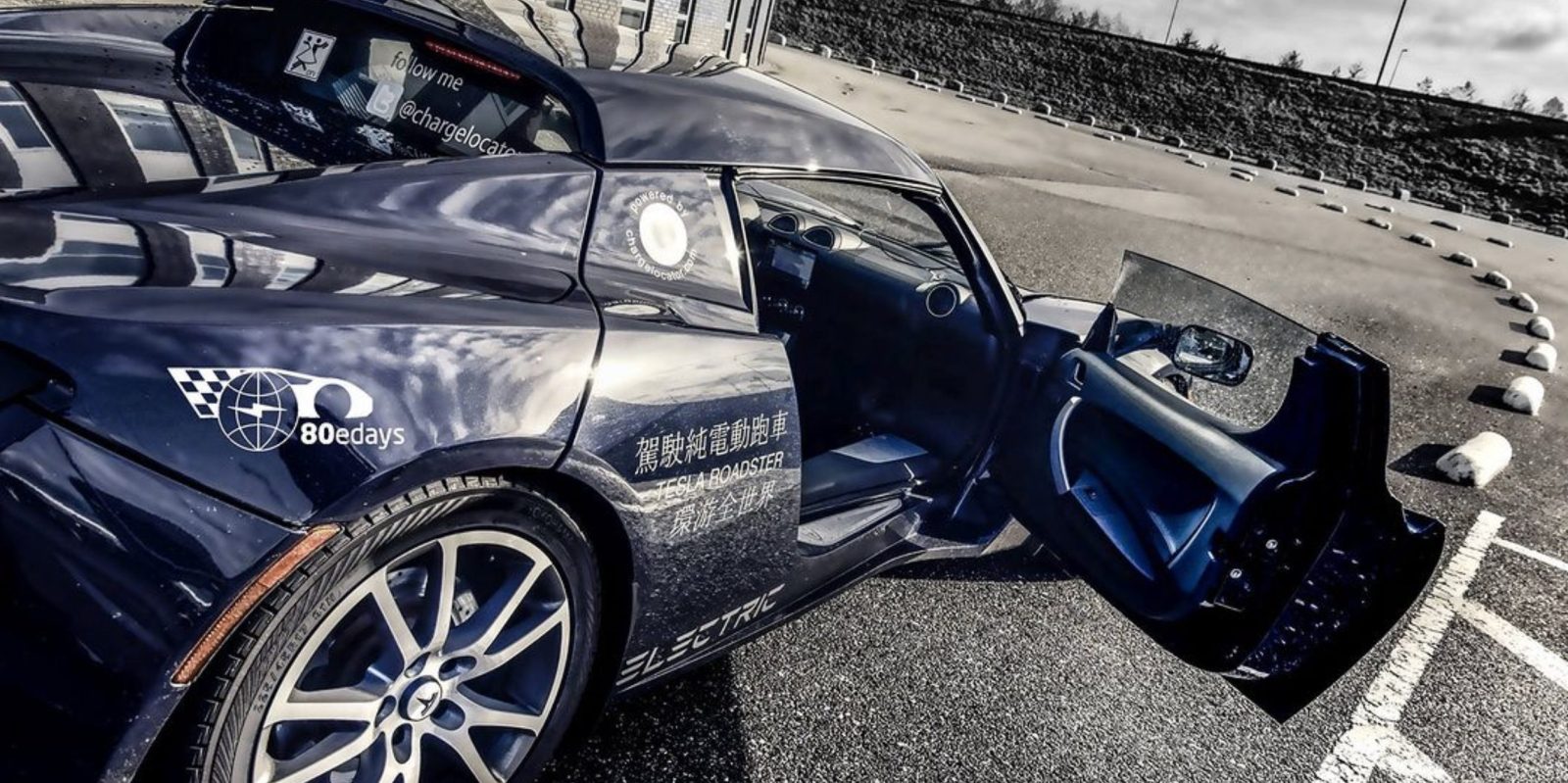
In 2012, Rafael de Mestre did something nobody else ever had – he drove around the world in an electric car, an original Tesla Roadster. And now, he’s driving around the world solo again in that same Roadster as a promotional and scouting tour and to recruit other teams to join him for yet another circumnavigation in 2024.
We got a chance to talk to him about his story when he stopped by for a charge during his second solo circumnavigation.
An IT consultant by trade, de Mestre was born in Catalunya and grew up in Germany. Early in his life, he remembers seeing the Citroen DS 21 and really liking it – except for the smell. He asked, why does it need to be so smelly? Isn’t it just going to make everything smelly? The adults told him no, there’s plenty of air; it won’t be a problem.
He wonders, now, what things might have been like if the adults had listened to him. And now, he’s driving around the world – again – to show that all of us can stop stinking up the air without sacrificing mobility, even on the longest and harshest routes.
Past round-the-world trips
The first trip around the world in an EV was in a time before there were many electric car chargers installed anywhere – and certainly no DC fast chargers yet, either. But de Mestre likes to say, “Wherever there is light burning, you can charge your car.” The point is that charging stations are far more available than most people think, and an EV can be charged anywhere that there’s electricity, which covers most of the world (he also saved his charging points in the Electromaps app).

It started as somewhat of a personal challenge – de Mestre had planned in 2013 to be the first to drive around the world once he took delivery of his Model S. However, in February 2012, a Citroen C-Zero took off from Strasbourg, piloted by two French drivers. Deciding he couldn’t let the duo beat him, de Mestre hastily planned a journey and set out from his native Catalunya in the electric car he had available, a Tesla Roadster, hoping to overtake the French team.
Over the next few months, the “race” took the two electric cars across Europe, the US, the Gobi desert, Kazakhstan, the Ural mountains, and Russia. In September, just a few weeks before the end of the trip, de Mestre managed to pass the Citroen and finished the journey around the world as the first electric car to ever make the trip.

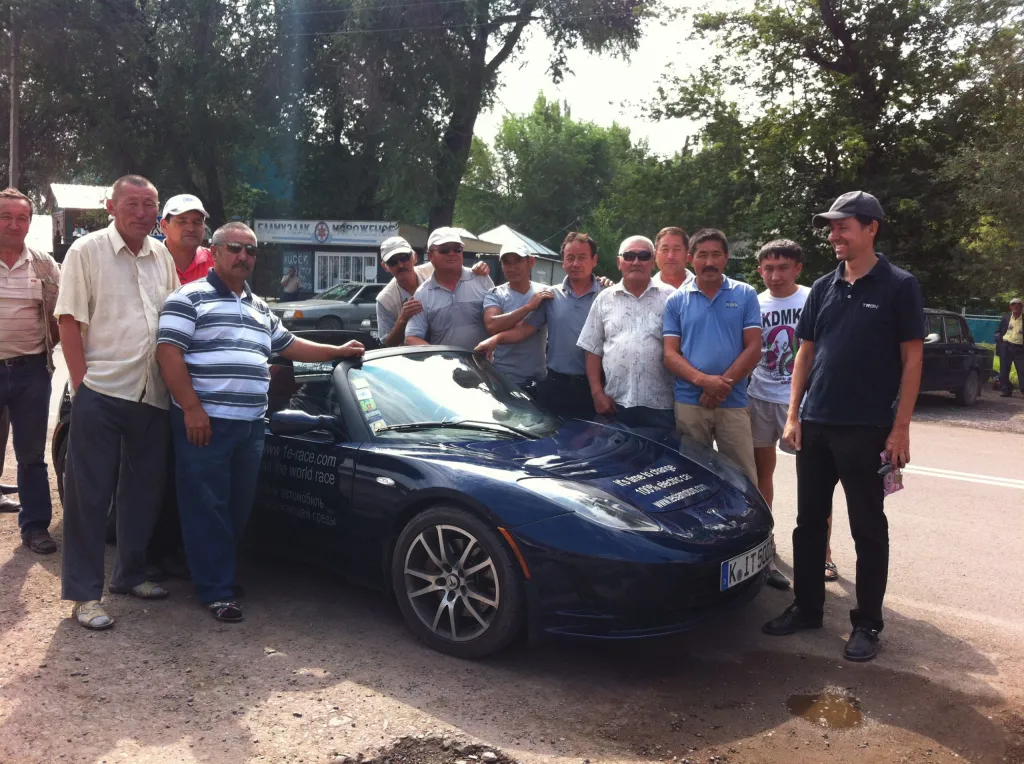
The whole thing took 127 days – more than the 80 that de Mestre had hoped for, but given the limited time for planning visas and shipping across oceans (and a crash just 600 miles before the finish line), it’s not so bad for a first time out.
In 2016, de Mestre and 10 other teams completed a similar trip but this time with a greater variety of cars and more charger support. That trip involved one Roadster, eight Model S, one Denza, and one electric bus from the Hungarian company Modulo. And this time, they completed it in the planned 80 days.
Another trip was planned for 2020, but needless to say, travel was a bit more difficult that year. So that trip was pushed back and will now occur next year, in 2024.
Current solo circumnavigation – scouting for 2024
In advance of that trip, de Mestre has started on another solo world tour, scouting routes and locations for next year and looking for potential supporters or teams to recruit and join the trip. If you’re interested, check out 80edays to suggest stops or to express interest in becoming a team. It’s not cheap or easy, though; he’s looking for serious applicants.
You can track his location during this trip around the world, which has so far passed through most of the US – with a trip up the west coast remaining – and then will continue through Asia and Europe:
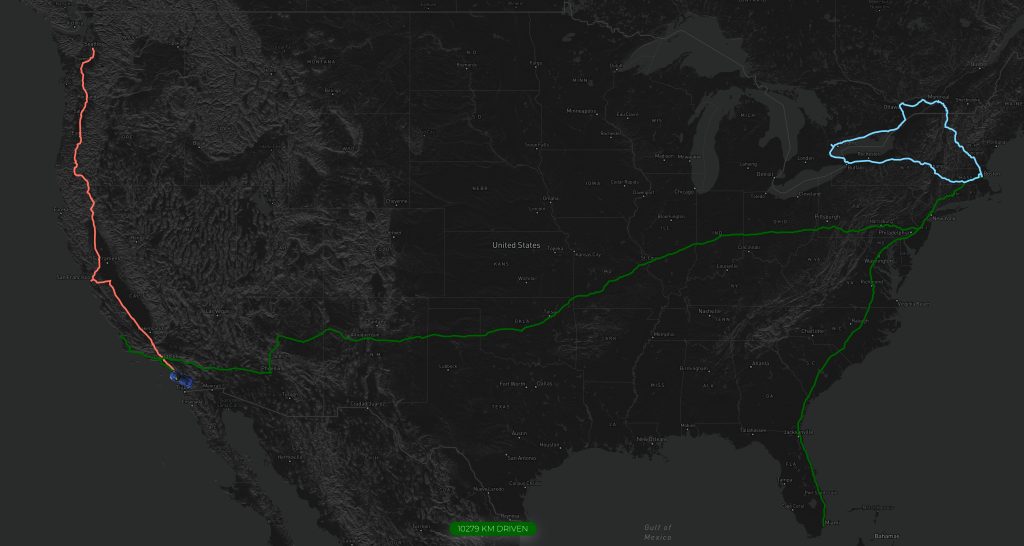
This trip started in the US rather than Europe because he needed to get a new battery anyway. The original died after spending years in a museum, so the car was shipped to Gruber Motors, a Roadster repair shop in Arizona. Now, he’s got the upgraded 80 kWh battery, raising his range from the original ~240 miles to ~350.
To get the car to America, de Mestre accomplished what seems to be another zero-emission first – possibly the first car transported across the Atlantic with zero emissions (he couldn’t find any record of another vehicle doing the same, only transfers along the same coast).
For this feat, the car ended up in the cargo hull of the Avontuur, a cargo sailing ship. de Mestre said he was looking for a zero-emission shipping solution, but when he called the Avontuur, they told him they didn’t have enough space for a car. He pointed out that this wasn’t just any car; it was a tiny Tesla Roadster – and after checking the dimensions, they realized the car could just barely fit.

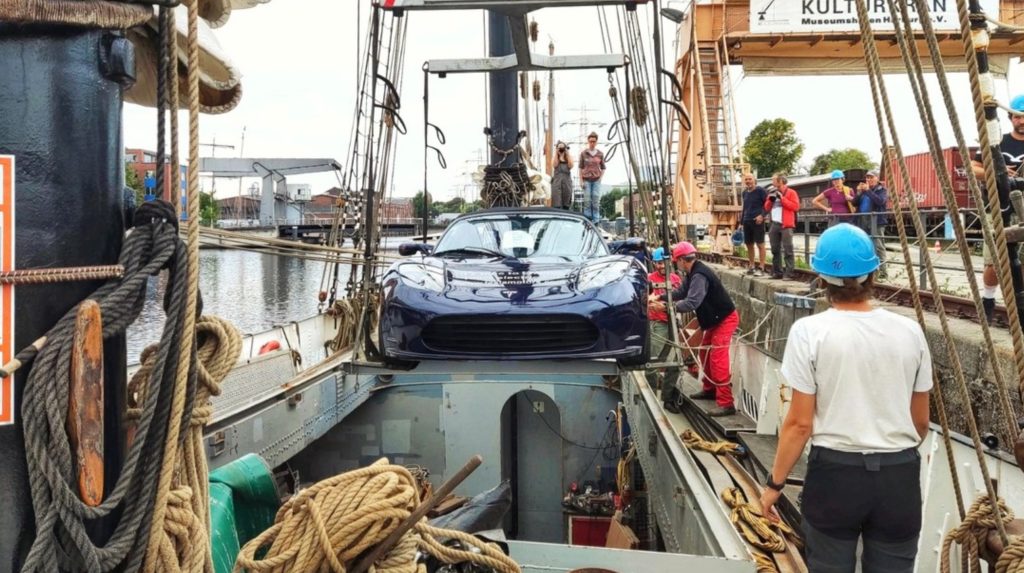

Unfortunately, there doesn’t seem to be an option for zero-emission transportation across the Pacific – yet. So Seattle to Hong Kong will have to involve fossil fuels for now.
The trip across America has thus far consisted of meeting with various Tesla clubs and longtime electric vehicle advocates and testing the legs on his new battery (he was able to get nearly 400 miles on a single charge once). And while most of the country is in his rear-view mirror at this point, he’s still got the west coast to conquer in the next couple of days. There are a couple of events and meetups planned. Scroll to the bottom of this page to see the most recent updates to the calendar (and expect changes – he’s going around the world in a Roadster, after all).
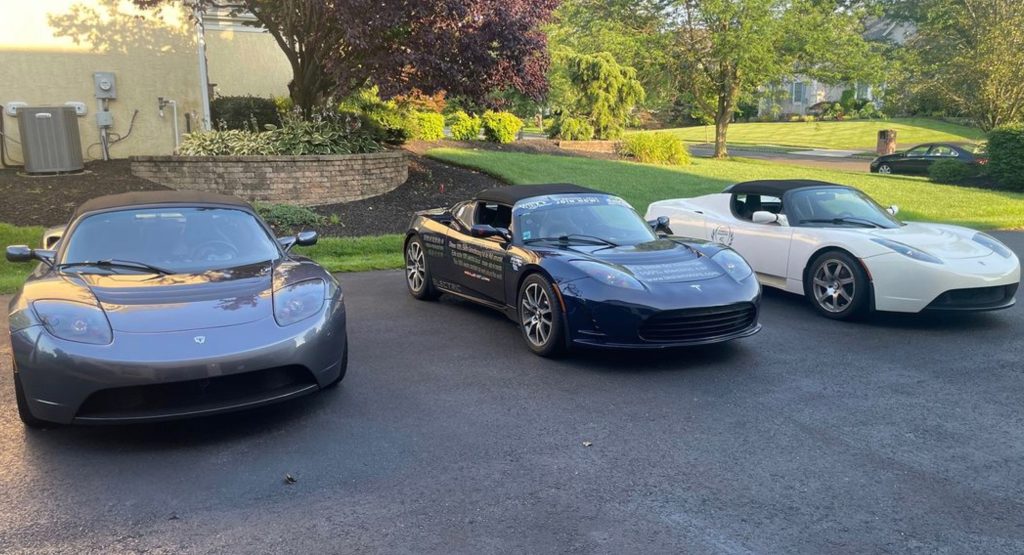

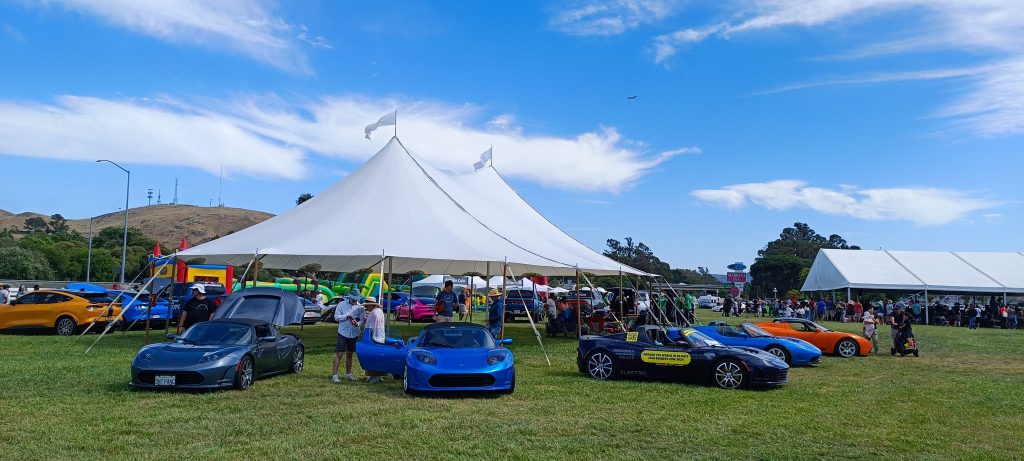
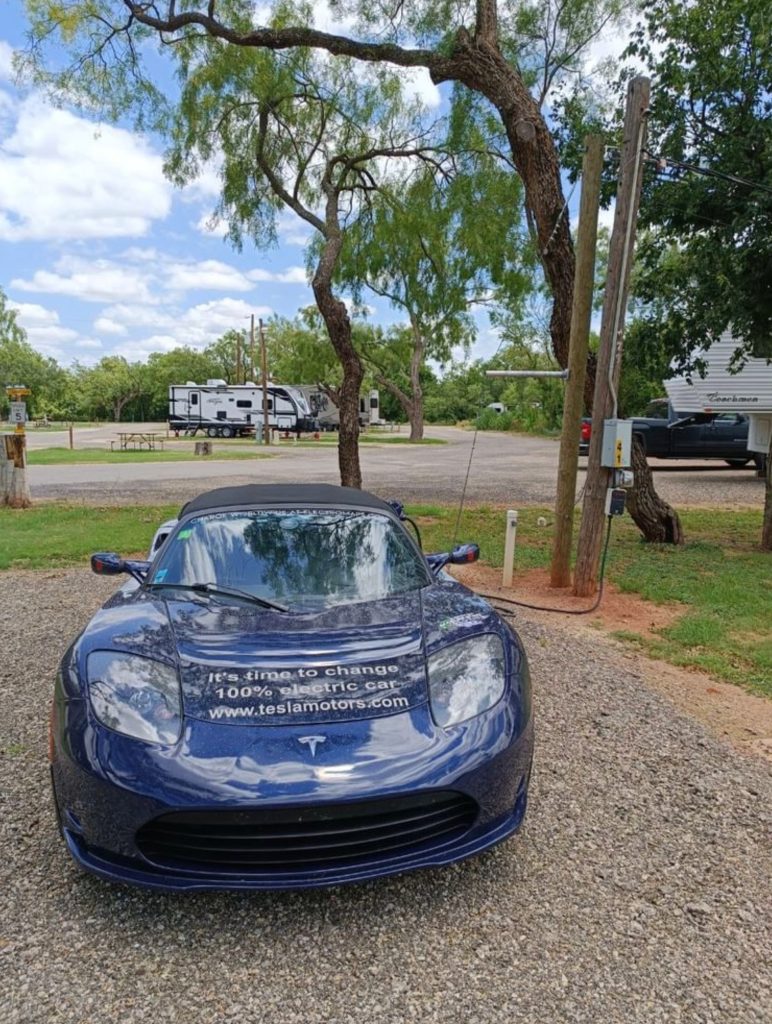
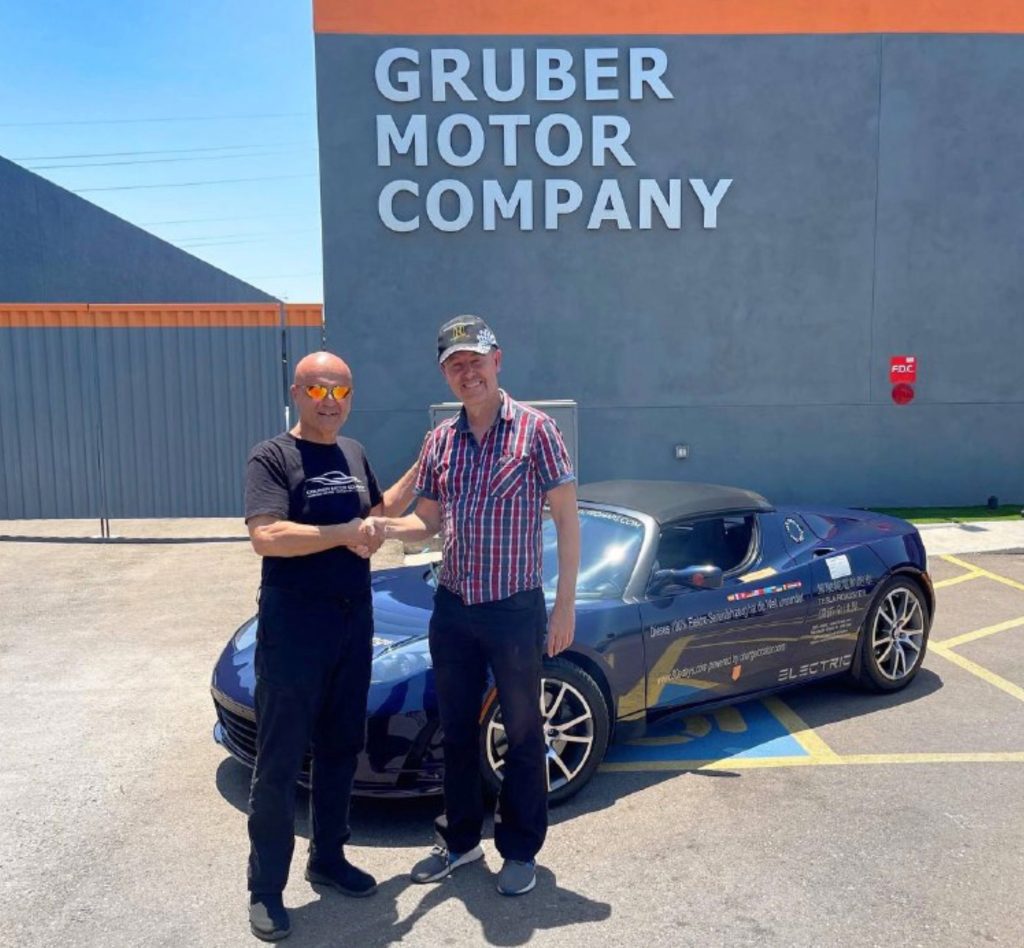
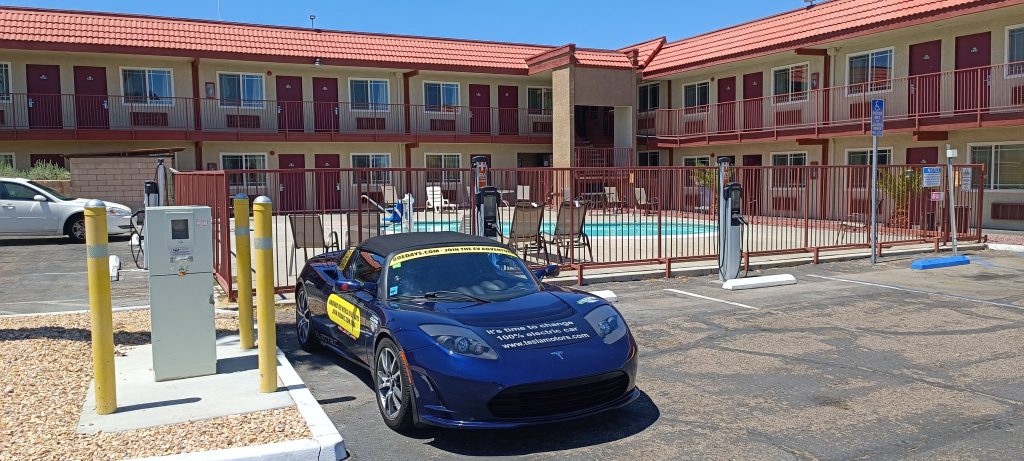

Looking ahead to Asia, another goal of this trip is to take a different route than before. Previous trips have included significant legs through Russia, which is an easier and more developed route to cross Asia.
But with the war in Ukraine and the stranglehold that Russia has over the European fossil energy supply, de Mestre wants to take another route. He’ll avoid Russia by taking a ferry from Kazakhstan to Azerbaijan across the Caspian Sea and entering Europe through Turkey. This will demonstrate how Russia could be cut out of commerce if it’s going to continue its aggressive actions.
He would also like to see more penetration of electric cars into areas outside of Europe, the US, and China and is working to coordinate the installation of charging points along his route. These other parts of the world are “like Europe was in 2012” – there are only a few EVs around, with a small but dedicated group of advocates. (Kazakhstan’s Tesla club has about seven people in it.) If the rest of the world can follow a similar trajectory, albeit delayed a bit, we’ll be on a good path toward easing the climate crisis.
Plans for 2024 and beyond
For the 2024 rally, de Mestre hopes to get 12 teams to complete 40,000 km of electric driving in 80 days – 500 km per day, consistently, for almost three months, even in the face of sometimes-slow charging, border crossings, and reliability issues. He’s planning to certify it as an official world record so that each team involved will have bragging rights that they were involved in one.
He also dreams of eventually completing a trip that involves driving to the Bering Strait and taking an all-electric car ferry across, completing a zero-emission circumnavigation in an electric car.
This is technologically possible, as there are electric car ferries already in use that would be capable of the journey, but none of them (nor any car ferry) travel between Alaska and Russia. So the political question, here, is a greater one than the technological one.


This brings up the point that the most frustrating moments of de Mestre’s trips have been at borders: visa troubles, fees, waiting for approvals, and so on. Between these troubles and the international nature of climate change, de Mestre has largely decided that borders are a roadblock to solving many of the world’s problems. When two countries are polluting across borders, rather than working together to solve the problem, what will often happen is that each one blames the other and does nothing to improve the situation – all the while, the global problem continues.
But these dreams are further in the future or perhaps can’t be solved by a single around-the-world trip. In the meantime, he’s focused on planning for next year’s trip, which starts in May. Find out more at 80edays.com, and follow the current trip on Instagram at @80edays_official or on twitter at @chargelocator.
Electrek’s Take
Some may ask what the purpose of a stunt like this is, thinking that it’s just a waste of time, money, energy, and so on. But this can be asked of many human pursuits, including many that are more useless than this.
There always needs to be someone who’s first to do something, who pushes the boundaries and shows people that something is possible.
And in this case, I am just one person who heard about the first trip way back in 2012 and yet have used it as an example countless times to show people that electric cars are more capable than they might have thought.
Maybe you live in Fresno and think there aren’t enough chargers near you because you aren’t in a huge city like LA… but if a car that can’t supercharge and uses a plug that no modern car does can make it through the Gobi desert, well, maybe Fresno isn’t so difficult after all.
A stunt like this provides an object lesson: if an IT consultant can pick up with little notice and drive an electric car around the world, with as little public charging support (and no supercharging) as there was in 2012, and then 10 more teams can do it again in 2016, and hopefully more teams again in 2024… then why are your circumstances so much more impossible? Maybe it’s not that hard after all.
FTC: We use income earning auto affiliate links. More.





Comments